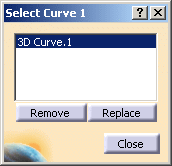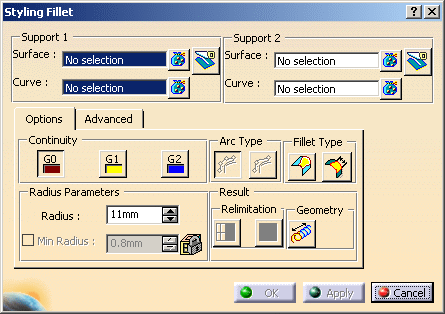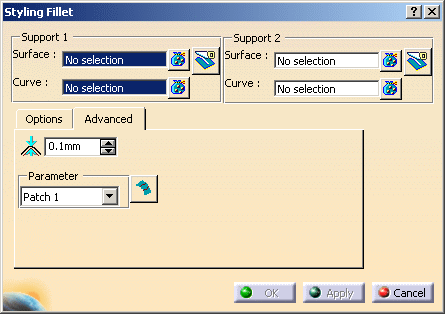The Styling Fillet dialog box is displayed. Following dialog box is open in Options mode.
The following dialog box is open in Advanced mode.
-
Select the two surfaces where you want to create the fillet.
Two vectors and the continuity symbol appears (G2).

-
Click Apply create the fillet. This option is only available for G2 and not for G0 or G1.
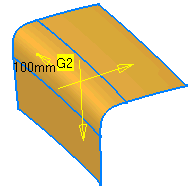
When you activate minimum radius, a new vector appears enabling you to change the minimum radius in the middle of the fillet. Alternatively, you can change the value using the up and down arrows in the Minimum Radius.
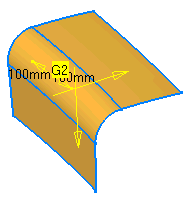
The Styling Fillet dialog box displays several options helping you to create the fillet:
-
Radius: Fillet radius.
-
Radius Parameters
-
Fillet Type:
-
Variable: Activates variable radius (only possible if edge tolerance is met).
-
Chordal Fillet: (only for Variable off) Instead of the radius, the chord length of the cross-sections defines the fillet.
-
-
-
-
-
Parameter: Different options for parameterization of the result and fillet surface.
-
Default: Internal computed best filling parameterization.
-
Patch 1: Parameterization is taken from the 1st patch. For Advanced mode, one Patch 1 is available.
-
Patch 2: Parameterization is taken from the 2nd patch.
-
Average: Average of parameterization from patch 1 and patch 2 is taken.
-
Blend: Traces have parameterization of their correspondent surface.
-
Chordal: The parameterization is the chordal parameterization.
-
-
Edge Tolerance: Tolerance for common edge detection. If no common edge is detected, variable fillet is not possible.
-
-
Extrapolate: Fillet surface also on extrapolation of reference surfaces.
![]()
